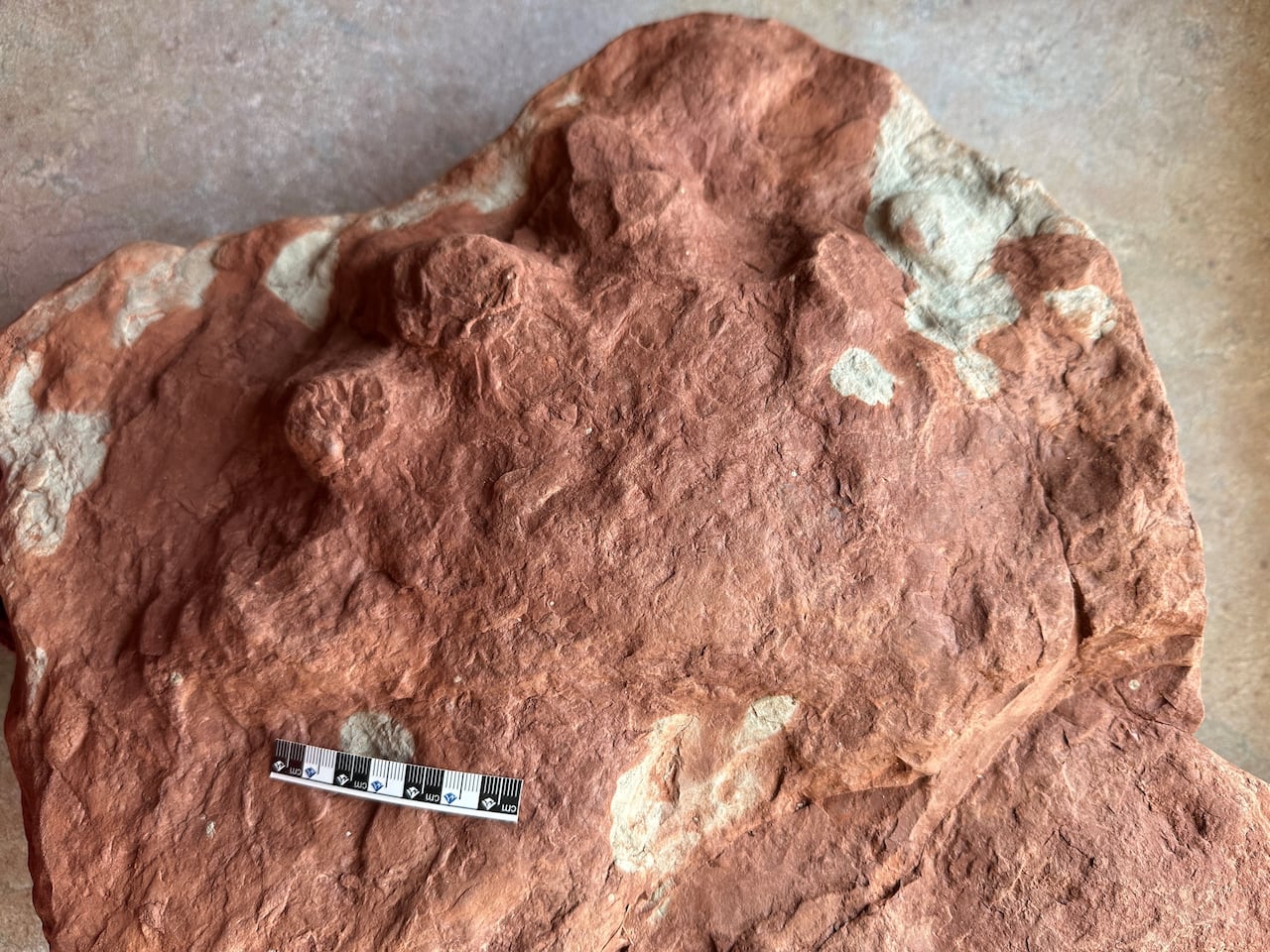Around 290 million years ago, a very large reptile — possibly a Pareiasaur — roamed along the shore of Hillsborough Bay in P.E.I., leaving a footprint for an Islander to discover all these years later.
The “remarkable” fossil footprint is 25 centimetres wide and was found by North Rustico resident Patrick Brunet.
A news release from the P.E.I. Museum and Heritage Foundation said the footprint may have been made by a Pareiasaur, a “heavily built, knobby-skulled plant eater that could weigh up to one tonne.”
That’s over 2,200 pounds.
A giant step into the past
In fact, Pareiasaurs were the largest animals to roam the equatorial regions of Pangea at the time, according to the release. Back then, the world was connected in a single super continent, and P.E.I. was right near the centre.
It was a time known as the Permian period, millions of years before dinosaurs roamed the Earth.
The discovery of this footprint adds to a growing collection of fossils from reptiles and amphibians that once roamed the province millions of years ago, the foundation said in the release.
And this one could be the oldest-known example of this type of fossil footprint ever discovered.
The footprint is certainly the largest Brunet, who is a self-taught scientist, has ever found.
“I knew immediately it came from a really big animal, and it was really important,” he is quoted as saying in the release.
Where does the footprint lead?
The next steps after the discovery include confirming whether it was indeed a Pareiasaur that made the footprint.

Brunet will be part of a team of international scientists who will work together on that investigation. The work will be led by Dr. John Calder, who is the lead investigator and advisor to the P.E.I. Museum and Heritage Foundation.
“This one footprint is a mind-blower, in its sheer size and due to the fact that nothing quite like it is known from this time, in the earliest Permian,” Calder is quoted saying in the release.
“P.E.I. will soon be seen as one of the most important sites for fossil footprints of life on land during this unique time in the Earth’s history.”
A farmer was digging a well in 1845 and found P.E.I.’s first fossil. We learn a little more from geologist Laura MacNeil about the creature that called the area home 300 million years ago.
The foundation said Prince Edward Island now ranks alongside world-famous sites in the U.S. and Europe for discoveries from the Permian Period, and the Island’s red rocks hold the best record in Canada for that era.
When the study is complete, the fossil Brunet found will return to the Island to be added to the provincial collection.







